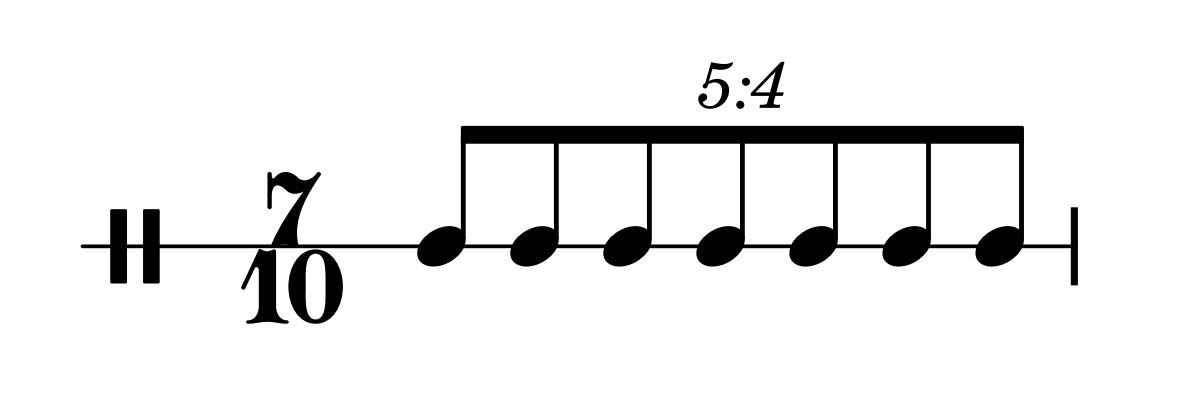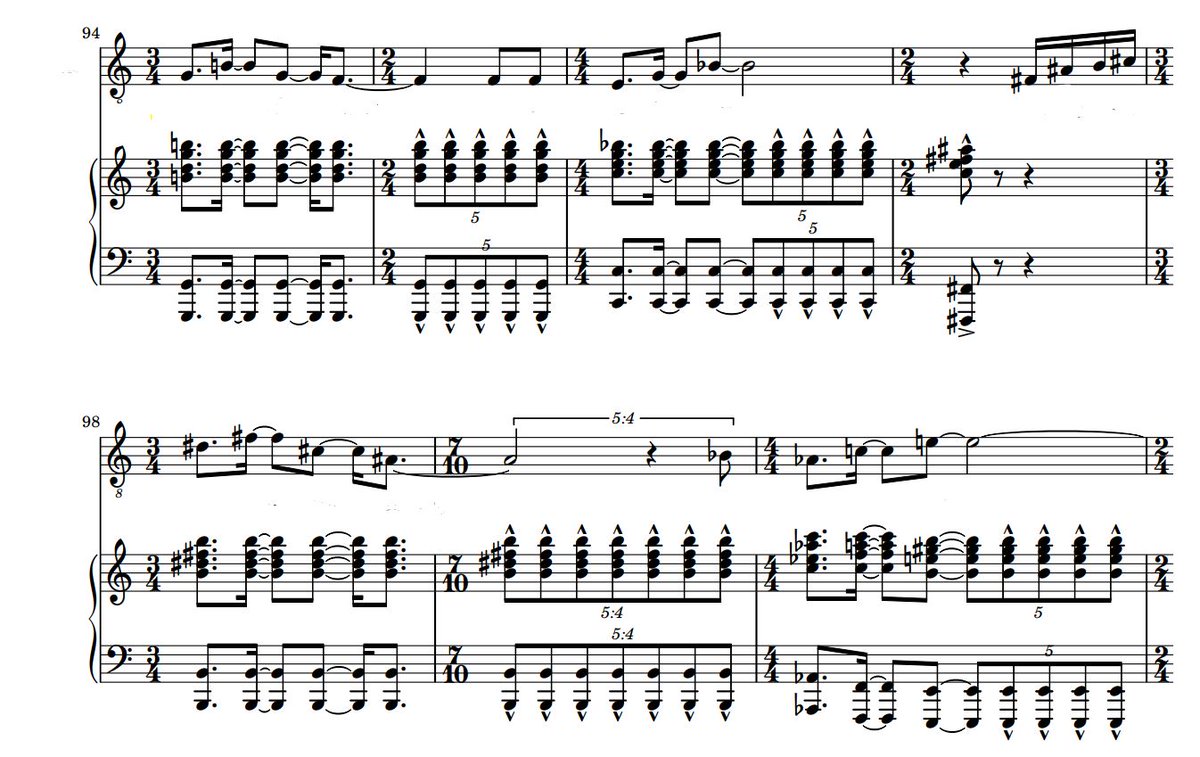ALL RIGHT SO
time to talk about . . . irrational time signatures >:) https://twitter.com/nonstandardrep/status/1358196592822652928
time to talk about . . . irrational time signatures >:) https://twitter.com/nonstandardrep/status/1358196592822652928
so-called irrational time signatures refer to time signatures that don't have a power of 2 in the denominator. so something like 4/6 or 7/10. if you are like i was ca 2016, you're probably looking at this like "what the *actual* fuck u cant do that what does that mean"
well!
well!
consider a regular time signature, like 2/4. that tells you that you have a measure that's two quarter notes long. how long is a quarter note? well it's . . . a quarter of a whole note. that sounds kind of tautological, maybe, but it's true!
a bar of 2/4 is two fourths of a whole note long. we don't necessarily always think about it like that, but fundamentally, that's what's going on. so a 7/10 bar is . . . seven tenths of a whole note. what, you might ask, is . . . a *tenth* of a whole note?
each note in an eighth-note quintuplet is one tenth of a whole note, so a bar of 7/10 will be seven of *those* long:
in isolation, of course, this isn't really all that meaningful. an entire piece in 7/10 would sound exactly like a piece written in 7/8; these things are only noticeable in relation to an already established tempo. here's an example in situ from my own work:
these can seem a little funky, but it's worth noting that in some cases we can already do equivalent things with some standard notation! consider these two examples: the 1st might look totally impossible to feel, but the relationship between the beats is the same as in the 2nd
anyway, the long and the short of it is that these are just rhythms! they might take some getting used to if you haven't played with them before, but once you get a feel for them, they can actually be pretty intuitive, u just kinda ~vibe~, idk
which is to say: she wants these time signatures to *automatically make tuplets out of notes contained within them*, such that an eighth note in a bar of 7/10 *is not an eighth of a whole note* but is a *tenth* of a whole note instead
meet. me. behind. the. Denny's.
meet. me. behind. the. Denny's.
this isn't how meter works! the 20th century pretty firmly established the convention that changing meter does *not* automatically change the tempo; if you want to change tempo (via metric modulation, say), you have to indicate that!
and if you're going to indicate a metric modulation in and out of these bars, it defeats the purpose of them! just write them as 7/8 with [quintuplet 8th] = [even 8th] or whatever. the point of these bars is to *not* have to do that!
this also isn't how rhythm works! if you're trucking along and you see an uninterupted stream of eighth notes in a mixed-meter passage, you're gonna assume that those 8th notes are all the same length. that's like, the backbone of what makes mixed meter work
now! you can certainly say it's weird to be like "there are 5 of these where there should be 4, except actually there are 7 of them", which is what that 5:4 tuplet indication kinda says, and if you want to do something like one of these, cool, rad, we can fiddle with it
like, whatever is easier to read, honestly. i think one big bracket is preferable, but if you disagree, whatevs. but the idea of having just. completely unmarked surprise tuplets lurking in the middle of a score??? incomprehensible. why the fuck would you do that
there's some other stuff i would Quibble with in the time signatures section (Do Not just intersperse unmarked 2/4 and 6/8 changes when the big beat stays the same — yes, some people do this, but it is always A Train Wreck; u will pry additive meter from my cold dead hands),...
...but this was the one thing where i went "NO" very loudly and got v v v Mad. mark your tuplets! time signatures are just time signatures, not magic portals to alternate tempo streams! that is all, good night

 Read on Twitter
Read on Twitter









